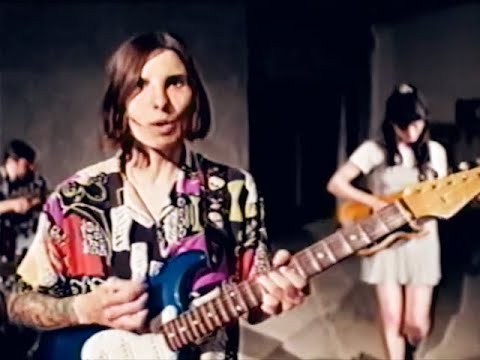
Back in 2006, a little-known country singer called Taylor Swift released her debut single ‘Tim McGraw’. Written when she was a highschool freshman, it sees Swift dissect her relationship with a senior who she knew would break up with her when he went off to college. It was the first taste the world got of Swift’s deeply confessional songwriting, and from that moment, we were hooked.
Now nine albums, a mantelpiece of awards and almost 15 years later, Swift is one of the most famous people on the planet. First emerging as a country-cross over artist, she’s since embraced glossy pure pop and indie-folk; but whilse her sound may have changed, Swift’s brilliantly honest lyricism has remained a keystone in her music.
Here we take a look back on Taylor Swift’s entire career and rank her nine albums in order of greatness.
‘Reputation’ (2017)
Look, ‘Reputation’ served a purpose. It saw Swift push back at a narrative that saw her portrayed as vengeful and bitter, an image that had been thrust upon her by the media and exacerbated by her very public, very long-running beef with Kanye West (first started when he infamously interrupted Taylor Swift’s acceptance speech at the VMAs, and regularly reignited by the Kardashian-West clan). The imagery for the album was filled with snakes, and lyrics subtly (and at times, not so subtly) addressed their falling out. True, this album successfully acted as a reminder that Swift is a powerhouse musician who shouldn’t be messed with. And a follow-up to ‘1989’ would always have big shoes to fill – but ‘Reputation’ lacked the stone-cold smashers Swift has proven time and time again she’s capable of. There are, of course, a handful of golden tunes (‘Dancing with Our Hands Tied’, ‘Call It What You Want’, ‘Delicate’).
‘Taylor Swift’ (2006)
Almost 15 years ago, before the Grammy awards and international tours, a fresh-faced, 17-year-old Taylor Swift released her self-titled debut album. Written in her freshmen year of high school, it positioned her as a country-cross-over hopeful ready for mainstream success. Filled with rootin’ tootin’ tunes like ‘Tim McGraw’, ‘Our Song’ and ‘Teardrops on My Guitar’ (largely considered Swift’s breakout song) that stormed the Billboard Hot Country Songs chart, it earned a teenage Taylor support slots on tour with Brad Paisley, Rascal Flatts and Faith Hill. It’s a solid album which shows bucket-loads of promise; but it’s not a patch on what was to come later.
‘Fearless’ (2008)
If ‘Teardrops on My Guitar’ from Swift’s debut album was her breakthrough song, it was ‘Love Story’, the ballad from its follow-up ‘Fearless’, that cemented her name in the pop history books. On Swift’s second album she still kept things country, but this time the pop edge that defined later releases was more evident. Songs like ‘Love Story’, ‘You Belong with Me’ and ‘Fifteen’, filled with heart-on-sleeve lyrics and earworm hooks, remain among her best; but between these moments of gold there are arguably a few instances of filler (‘You’re Not Sorry’, ‘The Way I Loved You’). That’s not to say that ‘Fearless’ isn’t a fine album – it won the Grammy for Album of the Year!
‘Lover’ (2019)
How do you follow-up ‘Reputation’, a revenge album filled with vengeance? With a record that’s “a love letter to love itself”. Swift’s most recent album ignores the bombastic electro-pop of its predecessor, and instead embraces the sleek stylings of ‘1989’. Although the first glimpses we heard from it (the musical theatre-style ‘Me!’ and the stomping ‘You Need to Calm Down’) didn’t do the record justice, listen to ‘Lover’ in full and you’ll find moments of pure joy. ‘Cruel Summer’, co-written with St. Vincent, a euphoric three minutes of exhilarating ‘80s synth-pop, should have been a single. The tongue-in-cheek ‘I Forgot That You Existed’ is a strutting reminder of Swift’s skills as a lyricist. And then there’s the title track, a gorgeous slow-dance, that acts as a reminder to why the world fell in love with Swift in the first place.
‘Speak Now’ (2010)
By album number three Swift was a certified Big Deal. After the runaway success of country-pop second record ‘Fearless’, for ‘Speak Now’ elements of pop rock, bluegrass and soft rock were added into the mix. Whilst it has less T-Swiz classics than other releases, across the board it’s one of Swift’s strongest albums, bursting with catchy morsels. The Grammy-winning ‘Mean’ is amongst Swift’s most underrated songs, ‘Sparks Fly’ is a toe-tapping head-banging anthem and break-up slow-burner ‘Back to December’ is a karaoke classic. It also boasts some of Swift’s best ever lyricism – for example its title track, where Swift vividly describes the wedding of an ex-lover: “I sneak in and see your friends / And her snotty little family, all dressed in pastel / And she is yelling at a bridesmaid / Somewhere back inside a room / Wearing a gown shaped like a pastry”. Top that, Shakespeare.
‘Red’ (2012)
On ‘Red’, Swift began her transition from country crossover artist to creating glossy, mainstream pop. The brilliantly snarky ‘We Are Never Ever Getting Back Together’ (Swift’s first ever Billboard 100 number one) and fizzing ’22’ are stone-cold smashers. ‘I Knew You Were Trouble’, with its swift-step breakdown, saw her signature sound infused with trendy dance production (and let’s be honest, it slaps). Meanwhile, ‘The Last Time’ (featuring Snow Patrol’s Gary Lightbody) showed a more mature sound with its grandiose alt-rock guitars and soaring melodies. But it’s ‘All Too Well’ that’s the finest moment on ‘Red’, and possible the greatest song Swift has ever written. Painting the picture of an unravelling relationship, it gradually crescendos, climaxing in the gut-punch couplet of “And you call me up again just to break me like a promise / So casually cruel in the name of being honest”. ‘Red’ paints a picture of a Swift evolving, fusing her earlier sound with sleek production and killer hooks, and eight years on it remains a hugely enjoyable listen.
‘Folklore’ (2020)
Swift’s surprise eighth album arrived with very little fanfare. Casting aside the usual lengthy album campaigns or meticulously planned drip-feeding of singles, T-Swiz uncharacteristically announced ‘Folklore’ the day before it was released. It’s not just the shock drop that felt different, though, as musically it saw Swift dive head-first into a new sonic palette of wistful indie-folk.
Teaming up with The National’s Aaron Dessner (who worked on 11 of the 16 songs) and long-time collaborator Jack Antonoff, it’s a stunning collection of modern folk songs. The brooding production glitches and glitters, embracing the indietronica that’s permeated the last few The National records. There’s a Bon Iver collaboration, too: melancholy duet ‘Exile’, a slow-burning number which eventually erupts into chattering layered vocals and euphoric strings at the climax. Yet it’s the lyricism that makes ‘Folklore’ such an astonishing album, with Swift writing both from her own point of view, as well as exploring other people’s. The spectacular ‘The Last Great American Dynasty’ describes the life of American artist Rebekah Harkness (whose Rhode Island house Swift bought in 2013) with vivid descriptive lyrics. And there’s what Swift has called The Teenage Love Triangle, a trio of songs (‘Betty’, ‘Cardigan’ and ‘August’) that explore a knotty romance from three people’s perspectives.
It’s a dazzling, surprising album, brimming with career-best moments, and heralded a brave new direction for the pop star.
Evermore (2020)
Not content with just giving us one surprise album in the year of our lord 2020 with the ultimate lockdown album ‘Folklore’, Swift returned to her cabin in the woods and a mere five months later released ‘Evermore’. She’s described it as a sister record to the aforementioned ‘Folklore’; where that record allowed Swift to completely reinvent her sound, coupling her trademark hooks and vibrant storytelling with indie-folk instrumentals, ‘Evermore’ exudes a new sense of confidence. There’s a free-wheeling, carefree attitude to the collection.
Haim collaboration ‘No Body, No Crime’ is a full-blown country revenge song, while ‘Long Story Short’ and ‘Gold Rush’ fuse Swift’s new sound with some ‘1984’-era gloss. ‘Marjorie’ is a tear-jerking tribute to her late grandmother and Justin Vernon-duet ‘Evermore’ is a euphoric beacon of hope that feels especially poignant at the end of 2020. On this record, Swift’s took her new sound and ran with it – with thrilling results.
‘1989’ (2014)
‘1989’ is a masterclass in how to make a timeless pop record. Here Taylor sacked off her country roots and embraced full-blown pop. Working with a who’s who of trendy producers and writers (Jack Antonoff, Max Martin, Ali Payami alongside indie darling Imogen Heap), she crafted a collection of glossy belters, that flit from fluffy dance-pop (‘Shake It Off’) and sophisticated electronic-tinged bops (‘Blank Space’, ‘Style’), to glorious indietronica (‘Out of the Woods’, ‘Clean’). Stuffed with ‘80s influence, it also saw a step up in Swift’s song writing, with her sharp, pithy lyrics feeling refined and sleek, hook-laden melodies dominating the entire record. It won a mantelpiece of awards – including the Grammy for Album of the Year – but perhaps even more impressive is the fact it’s already left a massive impact, a mere six years after it was released.
Its nostalgic sound has paved the way for other artists to make pure pop albums without feeling the need to embrace whatever genre’s popular at the time (just look at Dua Lipa’s ‘Future Nostalgia’ or Lorde’s ‘Melodrama’). The songs are as fresh as they were when first released in 2014 with the choruses still getting embedded in your head. In short: ‘1989’ is Taylor Swift’s masterpiece.
The post Taylor Swift: every single album ranked and rated appeared first on NME | Music, Film, TV, Gaming & Pop Culture News.






